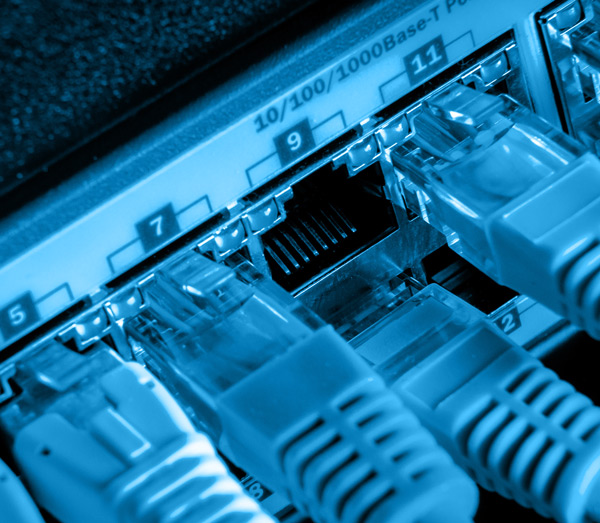Every business, whether big or small, needs a telecom infrastructure in order to conduct their matters appropriately. Aardvark designs and installs the network infrastructure and equipment you need to assure your data is appropriately available to team members and clients.
Telecommunications, information exchange over varying distances via electronic means, can refer to voice, data and video transmission. These data exchanges are transmitted via telephones, fiber optics, satellites, radio, television, the internet or even telegraphs. A network structure and medium of transmission are required to transport the data, which is where Aardvark’s network design and cabling options come in.
The best-known and largest example of a telecommunications network is the internet. However, less extensive examples are:
- Academic or Corporate Wide-Area Networks (WANs)
- Broadcast Networks
- Cellular Networks
- Emergency Communication Systems (i.e. Fire and Police)
- Telephone Networks

There is no one perfect network design for every company. Determining how your communications systems will work is involved and highly tailored to your specific needs. The final network design is determined by answering various questions:
- How large are the distances you will need to send and receive data?
- How many people will need to be on the network?
- Will your teams need to access information wirelessly or from remote locations?
- Will they all share data openly or do they need closed networks within larger open networks?
- What type of data will you need to share?
- Do you have an IT team that will monitor and maintain the network?
- Does your current network support your company data needs now and into the future?
Aardvark has highly skilled technicians with experience in designing entire networks and installing Cat5e, Cat6 and fiber optic cabling depending on your voice and data requirements. So how do you determine what type of network cabling you need? We at Aardvark will walk you through the decision process. We want you to be informed, though, so we have a quick breakdown of what these cable classifications mean and how they will impact your business.
The Cat5e stands for “Category 5 enhanced.” The previous Cat5 cables are basically obsolete at this point because there are better, more efficient options. Cat5e is a great general installation cable that will separate signals on different circuits or channels, eliminating interference. Cat5e cables can accommodate 1000 Mbps speeds at 100 MHz.
Category 6 cables are a massive improvement from Cat5e (although it still has its place in the communications world). Cat6 is appropriate to handle up to 10 gigabit Ethernet at 250 MHz, with a separator built in that isolates pairs from one another. Businesses who are concerned with preparing and staying updated for a long time should consider Cat6 cables to reduce upgrade costs in the future.
Cables made of fiber optic strands, instead of copper, are becoming a great resource in the data communications field. Due to the capability to transmit larger amounts of data with minimal loss, fiber optic cables can maintain data over long distances. There are also fewer risks of corrosion with the cables made of optical fiber and interference is practically eliminated.
Designing and installing a telecom network is a detailed process. Aardvark has the experience to not only get your business up and running, but to maintain your networks, troubleshoot network issues and service equipment.
Having a trusted team of telecommunications professionals is a necessity in this fast-paced world of data exchange. Field employees expect to have access to information regardless of their proximity to home base. Proprietary and confidential information requires strict protection. Remote and corporate teams must be able to communicate clearly with each other at all times. Let Aardvark take care of that for you. We let you focus on your business while we are essentially keeping it connected.
